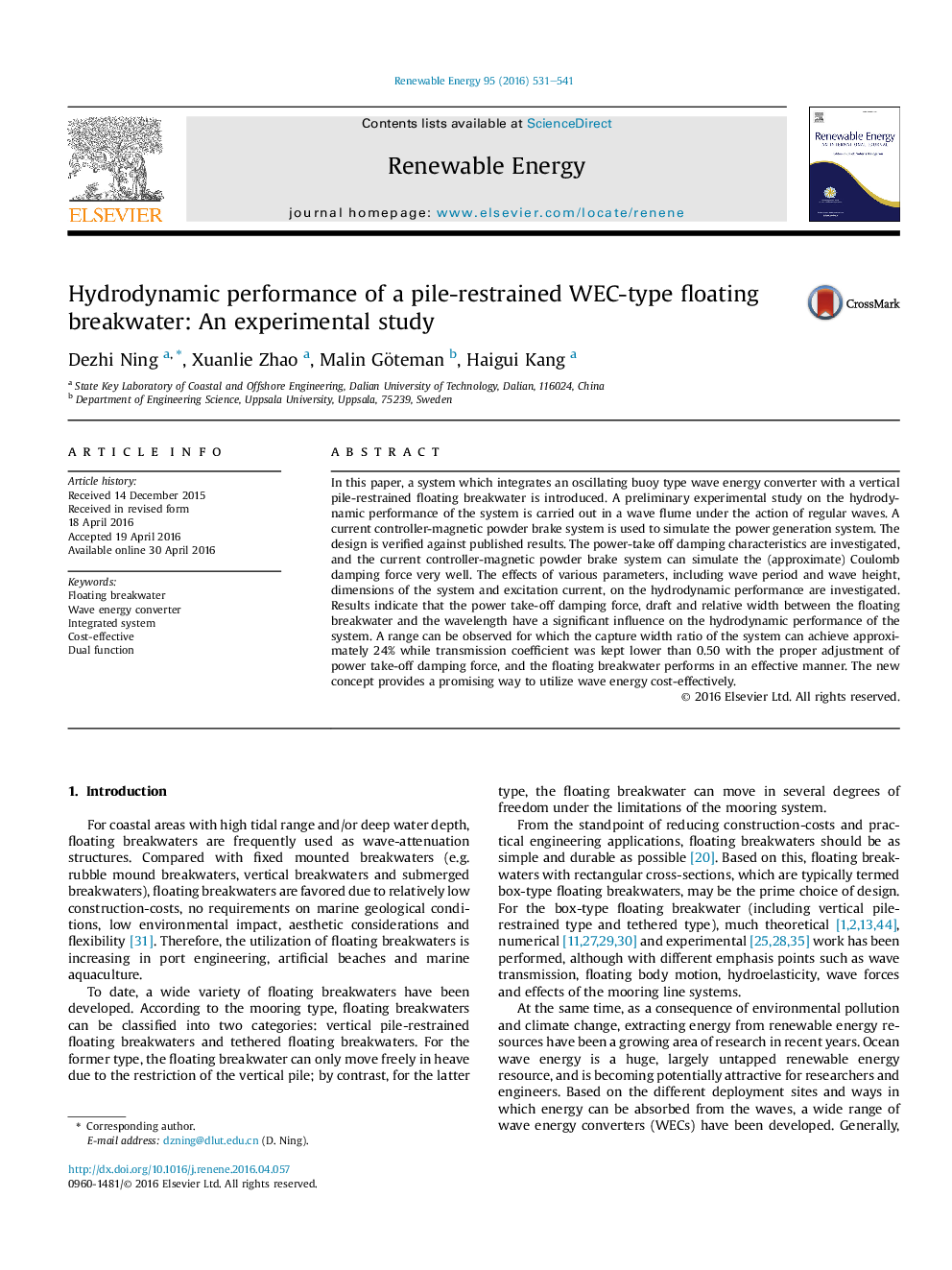| Article ID | Journal | Published Year | Pages | File Type |
|---|---|---|---|---|
| 299722 | Renewable Energy | 2016 | 11 Pages |
•By integrating floating breakwaters with WECs, wave energy technology can be utilized in a cost-effective way.•By integrating floating breakwaters with WECs, wave energy technology can be utilized in a cost-effective way.•The (approximate) Coulomb damping force of power take-off system was considered.
In this paper, a system which integrates an oscillating buoy type wave energy converter with a vertical pile-restrained floating breakwater is introduced. A preliminary experimental study on the hydrodynamic performance of the system is carried out in a wave flume under the action of regular waves. A current controller-magnetic powder brake system is used to simulate the power generation system. The design is verified against published results. The power-take off damping characteristics are investigated, and the current controller-magnetic powder brake system can simulate the (approximate) Coulomb damping force very well. The effects of various parameters, including wave period and wave height, dimensions of the system and excitation current, on the hydrodynamic performance are investigated. Results indicate that the power take-off damping force, draft and relative width between the floating breakwater and the wavelength have a significant influence on the hydrodynamic performance of the system. A range can be observed for which the capture width ratio of the system can achieve approximately 24% while transmission coefficient was kept lower than 0.50 with the proper adjustment of power take-off damping force, and the floating breakwater performs in an effective manner. The new concept provides a promising way to utilize wave energy cost-effectively.
